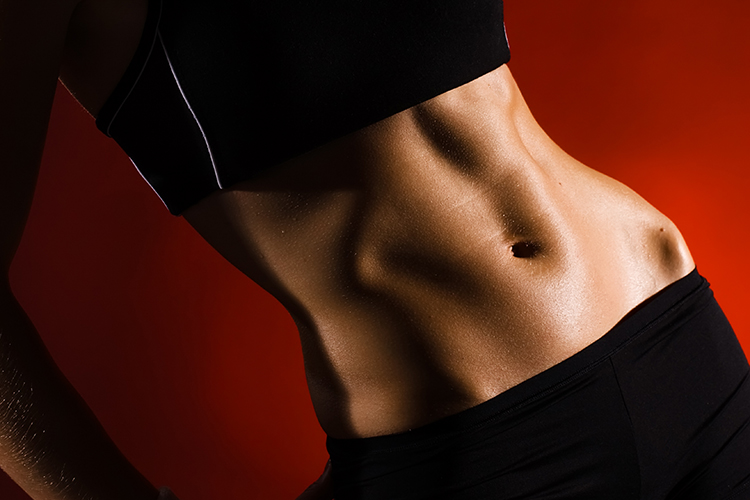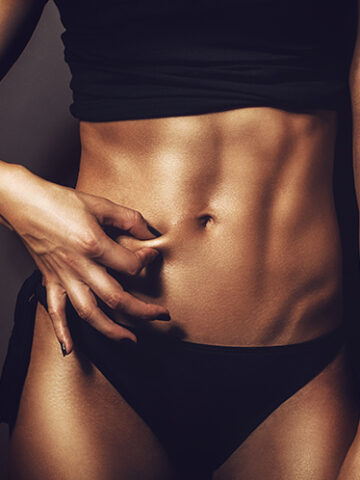
Today, I would like to tell you the secrets of how to lose that last annoying 10 pounds that won’t go away.
Or, if you’re having an impossible time losing weight, this can help you finally achieve significant weight loss as well.
The Body Fights Us at Every Step
The reason the body is so resistant to losing that last ten pounds is that it’s a very unnatural act for the body to lose weight.
People often think that if they’re really obese that if they go on a very low-calorie diet, the weight will just fall off because they are so far over any normal weight.
They think that if they have been eating 5,000 calories and they drop down to 1,200, they’ll lose 100 pounds in no time.
But it just doesn’t work that way.
Your body will seize up on you whenever you create stress, and any new kind of deprivation in your life creates stress just like moving, divorce, or work problems will.
The body doesn’t like to lose anything, especially weight, because it goes against its primary purpose—survival.
So, yes, as you get down to that last ten pounds, your body has been whittling away that body fat like crazy, and at this point, it’s thinking, “Are we starving here?
Is the organism dying?” And it begins fighting you on the weight even more, in two specific ways:
(a) it slows the metabolism
(b) it holds onto pounds in case it needs to live off of your fat for a while (If you think about our ancestors had to thrive in, you can see why this might have been necessary).
So, you need to take your body by surprise, in a sense, with some new strategic ways to “trick” your resistant system into losing weight again.
Here are 7ways to do just that:
1. Zero Sugars
Anything high on the glycemic index, anything high in sugar, increases your insulin, and this blocks fat burning.
You will not lose weight in the presence of insulin, folks, it’s just that simple.
And sugars include all of the starchy foods, sweet or unsweetened like
- Breads
- Cereal
- Crackers
- Pasta
- Biscuits
- Pancakes
- Waffles
- Alcohol
- Muffins
- Fruit
- Fruit juice (which has tons of sugar, by the way).
We need to bring all those out of the diet because we don’t want any excess insulin.
2. Intense Exercise
The intensity of exercise is what triggers the release of our most powerful fat-burning hormone called growth hormone (GH).
Here’s the catch-22 with intense exercise.
Exercise will help you lose weight, if and only if you recover from it.
All the benefit of exercise occurs in the recovery period.
So you need a full-body, high intensity, weight-bearing compound type of exercise and you need to fully recover from it.
Some examples of this type of exercise would be:
- Walking on a treadmill or outside with a weighted vest or hand weights
- Pushups
- Pull-ups
- Doing “mini-circuit” workouts at the gym, where you go back and forth between working your upper and lower body.
And yes, you might feel tight all over after this exercise, but the real benefits won’t occur until the recovery period.
If you work out and you’re tired or sore the next day, wait a bit, and give it some more time before you work out again.
You don’t want to overwhelm the body into a state of stress, because stress = no weight loss.
So work out, but do not over-train until exhaustion.
Think about moderation.
When will you receive the benefits of your hard-fought-for efforts?
When you sleep!
In fact, all the fat burning and other benefits only come during that period of sleep called delta wave sleep, which is the fourth phase of sleep.
The combo of high-intensity full body compound resistance exercise with recovery will increase GH changes which will then burn fat.
3. 8+ Hours of Sleep
Why do you need to sleep for 8 hours or more?
If you’ve ever been on a diet and finally got a good 10 hours of sleep after a week of healthy, careful dieting, lifting, walking, jogging, etcetera, whether you remember it or not, you probably lost more weight the day after you got that good, long sleep than all your days of dieting, exercising, and getting far too little sleep.
Why? Most fat burning occurs while you’re sleeping.
If you’re only getting 5 or 6 hours of sleep a night, your chances of losing weight are minimal.
You need a whole 8 hours or more of quality sleep so that you can reach that deep, delta wave sleep where you burn fat.
And it takes about 5 hours to reach that final stage of sleep.
So do that for yourself! Delta wave sleep is where the magic happens!
4. Two Meals Per Day
Two meals a day is good and I’m going to tell you why.
It’s not for calorie restriction!
I don’t want you to be hungry or cut calories because that will inhibit weight loss by creating that sense of starvation in the body that will impede weight loss at every turn.
Plus, over-restrict calories for a time and what happens when you start eating normally again, which, sooner or later, you’ll have to do or suffer vitamin and mineral deficiencies?
There is a thing, however, called “intermittent fasting” that will greatly improve your fat-burning processes.
Intermittent fasting triggers the release of that wonder hormone GH, which increases fat burning.
So, what you want to do is limit your meals to two—not three meals a day—and you want to add fat at the meal because fat, folks, will help you to go longer without food.
So it’s not so much about reducing calories, it’s about going longer without eating in order to avoid triggering insulin.
Why do we want to deter the insulin response?
Because insulin, see, works to stimulate the creation of body fat.
It literally conveys messages throughout the body to “accumulate” rather than burn fat, by telling your blood to absorb the fatty acids found in glucose and store them as body fat.
By eating only 2 meals a day, we are avoiding as many of these spikes as possible.
We will keep our insulin very low.
When should you have these two meals? When you’re really hungry.
This whole thing about the importance of breakfast for weight loss is a myth, I believe.
In fact, if you’re not hungry in the morning, wait until noon if that’s when you’re most hungry.
In this case, you could have a good lunch with a little fat, and then go all the way until five or six and have dinner.
And that’s it for the day.
If you’re getting too hungry for good sleep, move that second meal down closer to bedtime, like 8 p.m.
5. No Snacking Between Meals
Why? Well, this goes back to insulin spikes.
You want to avoid triggering insulin as much as you can because insulin blocks fat burning.
So you don’t want to snack and bump up that insulin again.
If you’ve been craving some of the foods you typically have as snacks, like nuts and cheese, have them at one of your meals, not between them.
If you keep spiking insulin, you can’t lose weight.
It’s just that simple.
A lot of people have insulin resistance, which is basically like a pre-diabetic situation that keeps your insulin 4-5 times higher than that of a normal person.
By doing a combo of only two meals a day and absolutely no snacking, you will actually correct insulin resistance.
If you’re getting too hungry throughout the day, you can add more fat to that first meal, so that you can go longer without food without starving.
So, no, you don’t even want healthy snacking.
No carrot sticks, no salad vegetables as snacks, no protein.
You don’t want to trigger that release of insulin that happens right before and while you eat, if you really want to lose weight.
6. Protein 3-6 Ounces Per Meal
6 ounces of protein might sound like a lot but it’s not.
A three-ounce serving is about the size of a deck of cards, a six-ounce serving, more like a hockey puck.
You want to avoid too much protein in your diet right now if you really want to lose weight.
See, too much protein increases insulin.
So, smaller amounts of protein are what you want, not large ones, and only two times a day, period.
7. Seven to Ten Cups of Vegetables a Day
You really need seven to ten cups of vegetables a day. Why?
One of the most crucial minerals we need is potassium, and it’s hard to get that RDA for potassium.
Our RDA for this mineral is 4700 grams a day.
A regular-sized banana has only 420 grams of potassium.
So you could eat 11 bananas and thoroughly wreck your diet, or you could do what’s wise, and get your potassium from vegetables.
Only a half cup of greens like kale or spinach and you get nearly 500 mg.
Other great places to look for high potassium are in just a few sprigs of parsley (which has 1080 mg), yams, and lima beans.
Without enough potassium
- You can’t curb cravings
- You can’t metabolize protein as well
- You can’t build crucial stomach acids that help us absorb minerals and digest proteins
- You’ll feel extremely drained and sluggish
- You can experience leg cramps as well (these are one of the first indicators of low potassium).
Overall, potassium is the most important mineral that you need every day, especially for losing weight, and most people don’t get nearly the potassium they should every day.
So try two big salads full of spinach, kale, some parsley, tomatoes, and maybe ¼th of avocado for fat, with some protein like lean chicken or turkey on it.
For the dressing, I like a little Dijon mixed with apple cider vinegar.
If you’re consuming a type of vegetable you’re not used to like kale or cruciferous vegetables, and you start bloating or get constipated, change up the vegetable.
See, there are a lot of microbes in your gut that live off of fiber, and if you eat too much fiber, you will overwhelm these microbes, and you’ll be bloated and constipated—and unable to lose weight.
So make sure you’re eating vegetables you can digest well.
Wrapping It All Up
So, folks, those are the 7 secrets to lose that last ten pounds and these will work if you follow them.
A lot of times, people focus on one more than another.
But I would love for you to try really doing all 7 of them and then, let me know what happens.
I would love to hear your success stories.





Leave a Reply